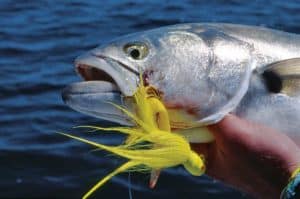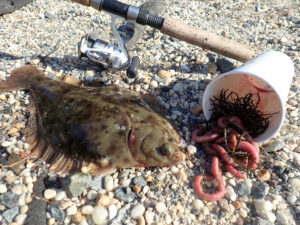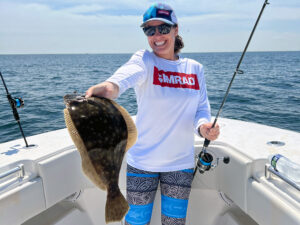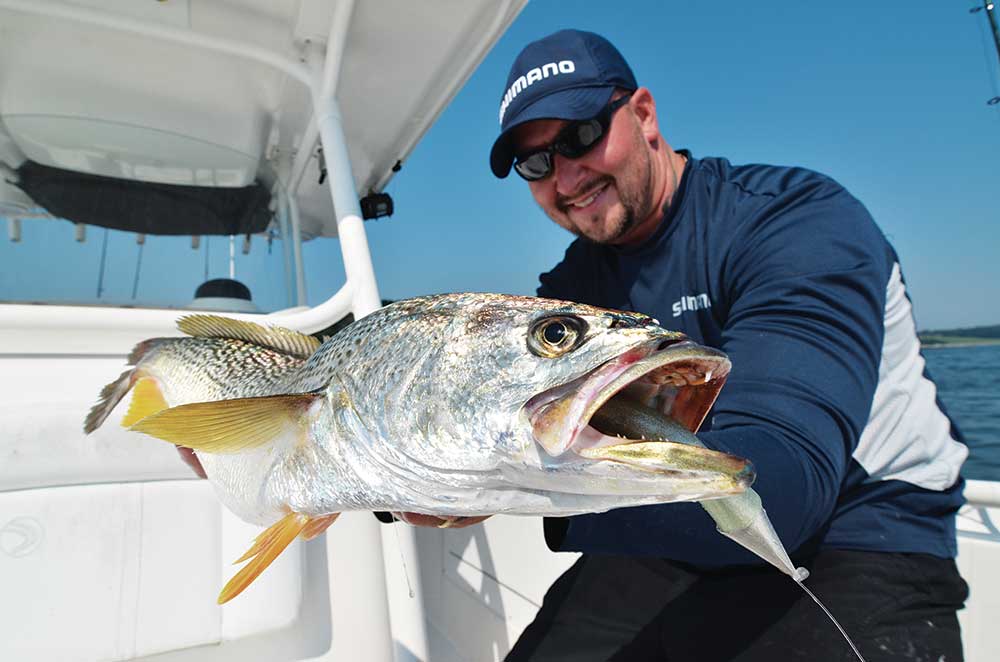
Anyone familiar with the television show Seinfeld understands why I refer to weakfish in the Northeast United States as “Mackinaw peaches.” When the fish arrive, people go crazy for them. But they’re not around long, so anglers have to jump on the action quickly. Kramer loves his Mackinaw peaches as much as some diehards, like me, love targeting weakfish in spring.
When fishing for weakfish, keep in mind that their finesse outweighs fight. Weakfish get their name because of their paper-thin mouths. In fact, they have an obvious resemblance to their Southern speckled trout cousin, which also have a tendency to come unhooked easily.
Leave the booming hook-sets at home when testing your wits against these tricky game fish. Beyond that rule No. 1, from my years of experience with this elusive member of the drum family, I’ve compiled this guide to targeting Northeast weakfish.
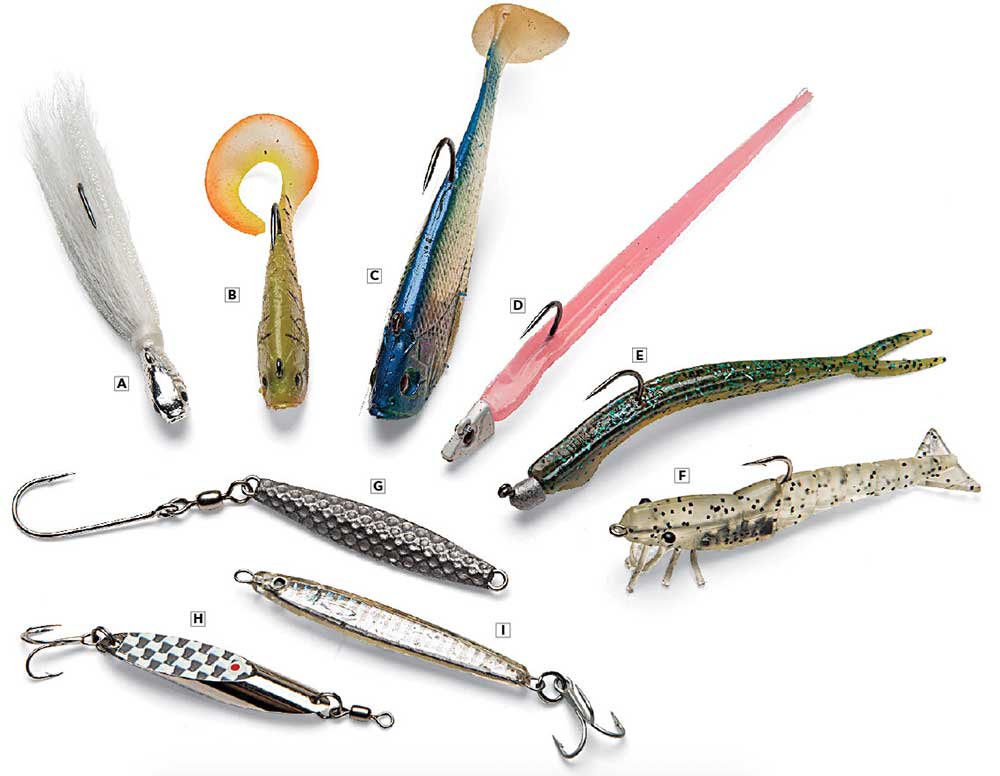
Why to Use Lures for Weakfish
Weakfish begin to filter into Northeast bays in April, as do their favorite foods. I fish mainly the waters around New York’s Great South Bay, between Long Island and Fire Island. Adult bunker (menhaden), spearing (Atlantic silverside) and grass shrimp make up the majority of their daily diet in my local waters.
It might surprise you that I neither use nor recommend any of these natural baits when targeting weakfish. Here’s why: A 10-pound weakfish is hefty; however, it struggles to swallow an adult bunker. As for grass shrimp and spearing, gathering these baits is too time consuming in the morning and not worth the effort. The reason I don’t run around the bay looking for live baits is because I don’t know of another species that readily attacks so many different artificial lures as will weakfish.
“I know many friends subscribe to the ‘big baits equal big fish’ tactic. However, when it comes to weakfish, I’m a strong believer in the ‘elephants eat peanuts’ approach.”
Small bucktails, Deadly Dick spoons, soft-plastic swim shads, diamond jigs, epoxy jigs, fluke-style plastics, Z-Man swimbaits and Berkley Gulp! are all lures that regularly catch weakfish. Many others work too.
Don’t forget one of my all-time favorite artificial plastics too: the jelly worm. Jelly worms are typically utilized for freshwater bass fishing. However, their long, slender body and slow-waving tail make them irresistible to weakfish when pinned to a jig head.
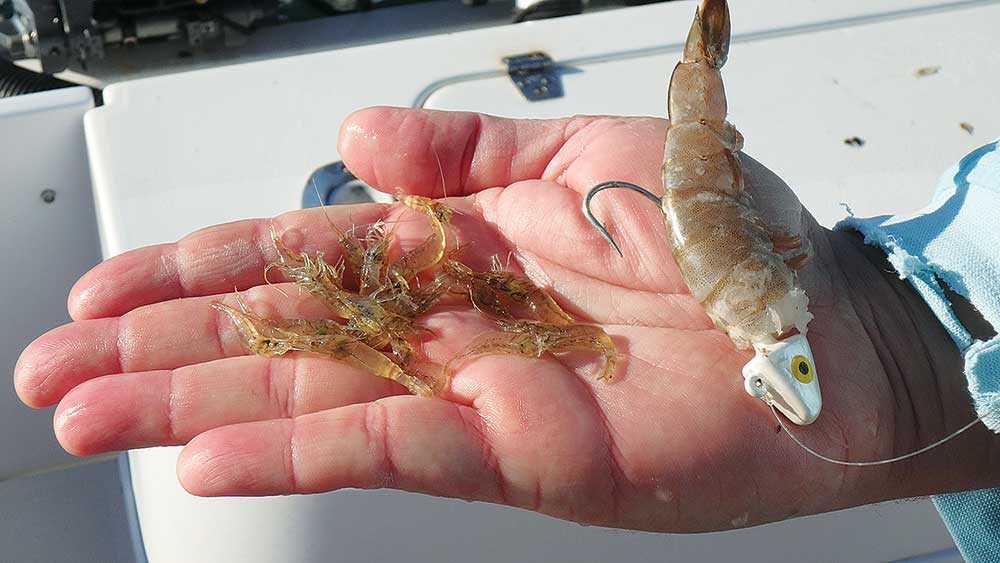
Choose your lure based on weather conditions, speed of the current, and depth of water. If you are fishing fast-moving water, pick a lure that will get down to the holes where weakfish are positioned. For example, if the water is moving slowly, you can get away with 3-inch swimbaits on lightweight quarter-ounce jig heads. More current logically requires a heavier presentation.
There are two theories that most fishermen abide by when it comes to the size of the lure. I know many friends subscribe to the “big baits equal big fish” tactic. However, when it comes to weakfish, I’m a strong believer in the “elephants eat peanuts” approach. Staying with smaller lures makes sense considering larger weakfish have trouble eating bigger baits like adult bunker.
If you want to use something natural, tip your jigs with a squid strip. You can also use sand worms on a high-low rig. (A high-low rig, sometimes called a dropper-loop rig, allows anglers to present two natural baits at once, one above the other, ending with a heavy sinker to hold the presentation to the bottom.) And here’s another little trick I use: Knowing that weakfish feed on shrimp, I purchase fresh 3-inch shrimp from my local fish market and rig them on a small jig. It’s a quick and easy way to add scent to your presentation.
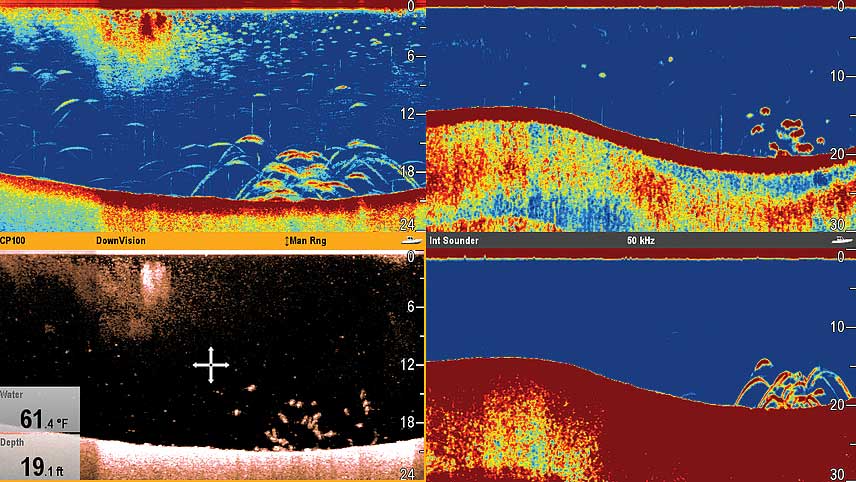
How Electronics Can Help Find Weakfish
Big spring weakfish are available in bays from New Jersey to Rhode Island, and technology has made it surprisingly easy to find them. I have so much confidence in my electronics that if I’m not marking fish, they’re likely not there. Regardless of the brand you use, make sure to regularly watch your sounder screen for marks. Most of today’s top units have seemingly hundreds of functions for various different applications. However, when looking for weakfish in the bay, there is no need to get complicated.
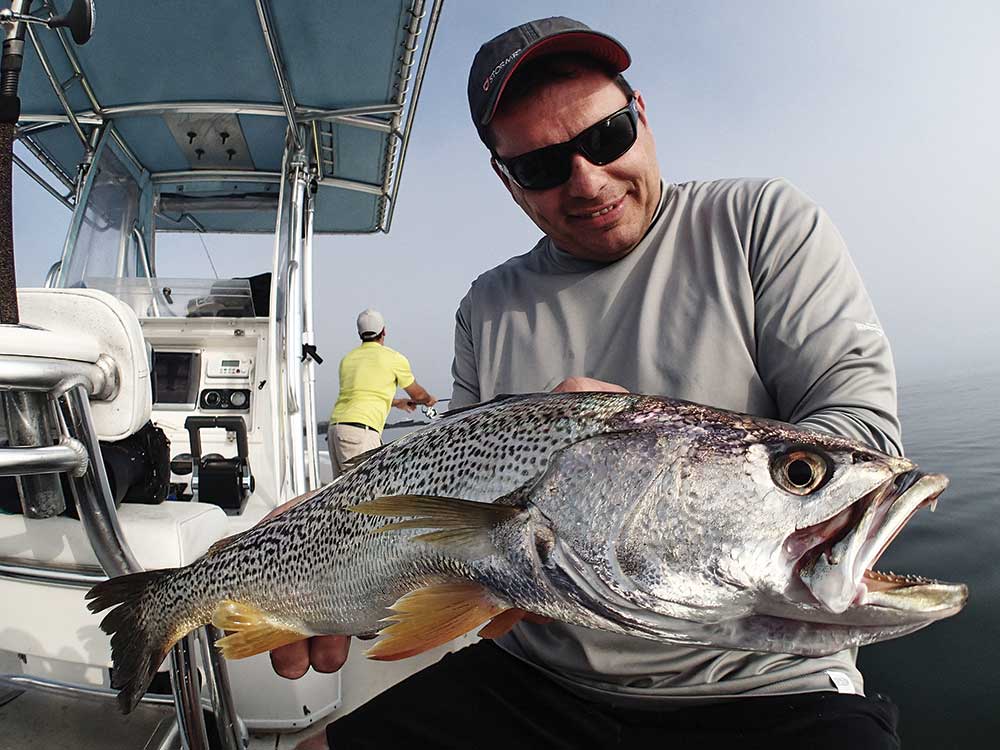
You might find it effective to use my technique when setting up your sounder to find weakfish.
I split my screen split into four quarters showing four different sonar views. (This is why most people should buy the largest display they can afford, I believe.) With this method, the screen actually gives me a look at what’s under my boat using three different megahertz options: 50, 100 and 200.
Running three different megahertz options allows you to maximize the sonar signal detail, as well as cover the widest area of what is below your boat. The 50 megahertz option provides a wider coverage, while the 200 megahertz option provides the most detailed resolution. The 100 megahertz will give you a combination of the two.
This is my favorite screen setup when fishing areas I know have historically held weakfish. Looking at different sonar views shows with certainty fish under my boat, and even what kind. In the Northeast, we simply don’t have the variety of fish that might be found in other parts of the country. Here, different species of fish school together in specific ways, so they will appear on your sonar in a distinct fashion.
Besides viewing four screens, the other function I consider vital is the ability to capture a screenshot on a flash chip. Once saved, I can then take the chip and upload the screenshot to my computer. This gives me the ability to study in my office everything that I was marking under my boat.
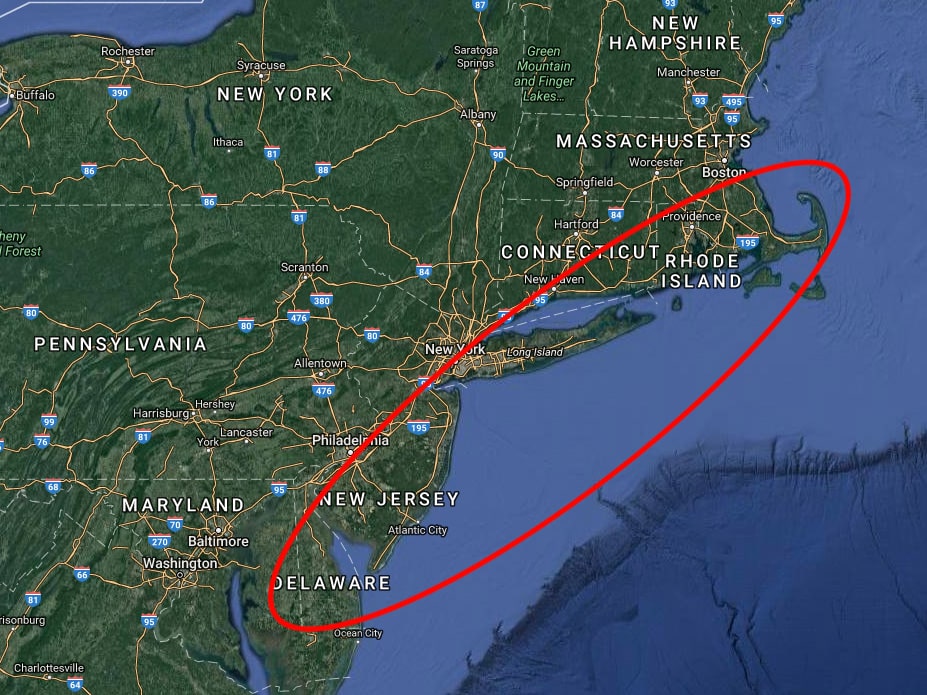
Odd Locations to Look for Weakfish
Quite often, a fisherman’s routine of heading out to the same spots leads to a rut. Anglers must expand their search if they can’t find fish in their favorite honey holes, and this is especially important for weakfish.
In Great South Bay, where I normally target weakfish, the most important variable in locating fish is tide, hence the weakfish nickname “tide runner.” Because I focus on tide heavily, I often fish near the inlet, where the tide runs strongest. Studying the tide tables will allow you to expand your fishing reach to deep holes and large contour changes in bays that can easily be identified by a GPS unit. Weakfish like to congregate in these deep holes and along edges where they can easily ambush prey. A strong tide helps deliver an easy meal as the weakfish wait. Only by scouting each different spot will you determine which tide produces best at new holes and edges.
If you’ve searched where you think they should be without success, you shouldn’t give up just yet. Sometimes you find a new spot by luck or by simply observing your surroundings. In spring, anglers can rightfully assume that weakfish are in the bay. If you aren’t finding them in your usual spots, consider branching out. You might be shocked by just how far weakfish travel from your nearest inlet.
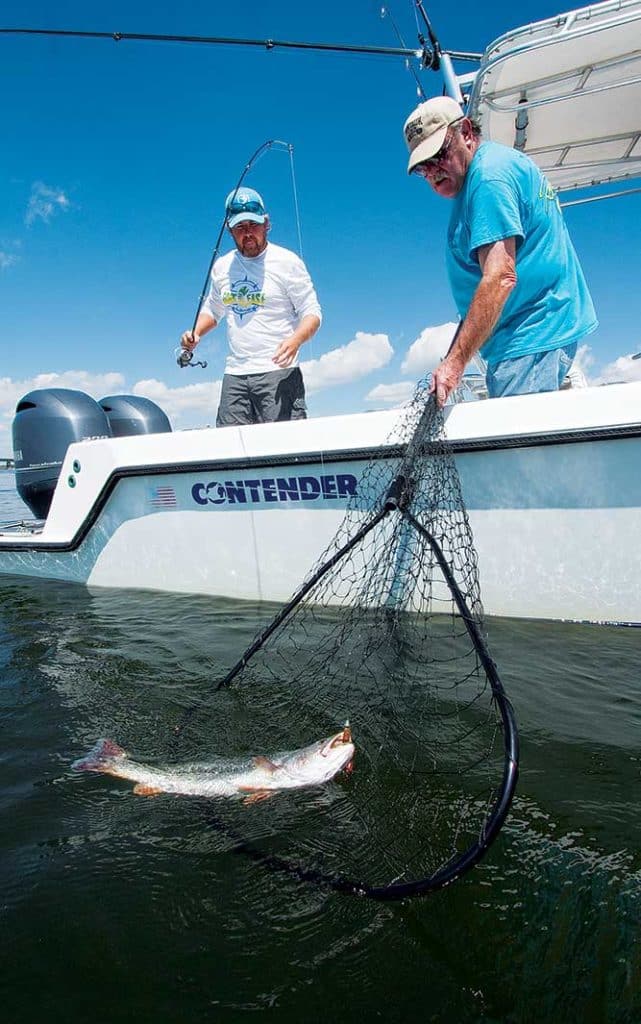
One past trip stands out in my mind. As I pulled up my cast net with adult bunker in preparation for a striped bass trip, I noticed several larger fish in the net. To my surprise, they were big weakfish! Who would have expected big weakfish 12 miles from the inlet, in a small river? Not only did I find weakfish in this river, but over the years, I’ve caught a lot of large striped bass as well.
Once I started catching weakfish and stripers in this location, the pieces of the puzzle started to fit together. I already knew this spot held bait, but I didn’t realize there’s also a significant change in bottom contour, with a ledge dropping from 5 to 25 feet. That depth change is a perfect ambush spot for weakfish.
Being alert to your surroundings can reward you with new potential spots. While heading home from a fruitless day, I observed seagulls diving near some jetties. This spot was at least 10 miles from the inlet. As I sat and watched, I noticed that the Fire Island ferries were the reason birds were diving. Coming in and out of the river, their engines stirred up the shallow water. The commotion forced grass shrimp to the surface, causing a frenzy among the birds.
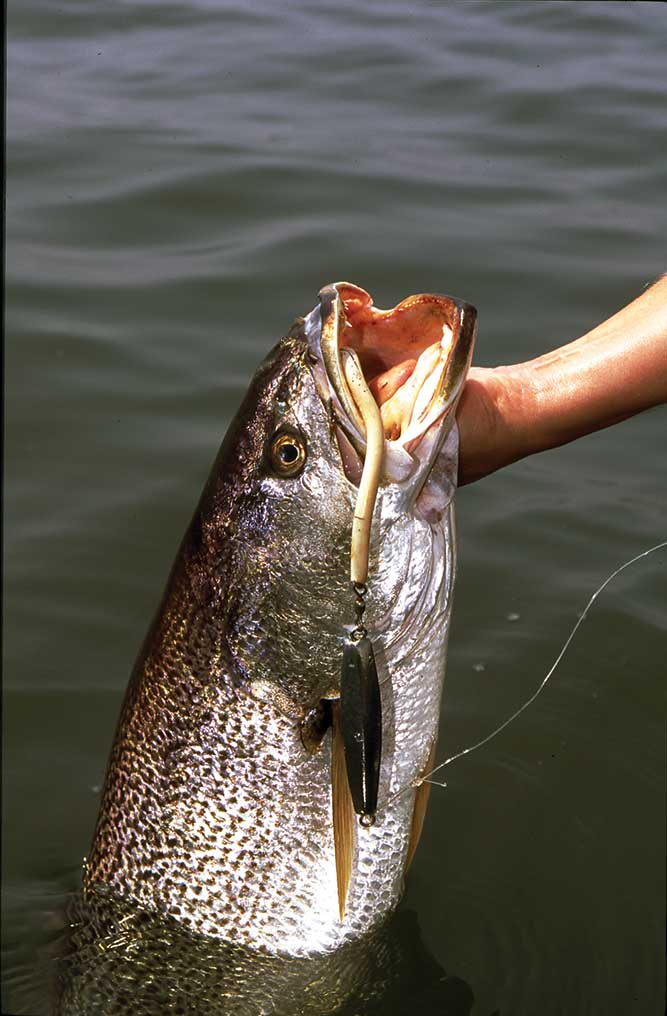
On the very first cast, I hooked up to what I thought was a bluefish, but it revealed itself to be a quality weakfish. I had to move from time to time to avoid the ferries, but I caught weakfish for the next two hours.
In order to be a successful weakfisherman, find as many spots as possible that might hold fish. Due to the weather, tides, wind or other factors, you might not be able to fish all of your favorite spots every day. If the wind is blowing hard out of the north, it makes fishing on the south side of the Great South Bay near impossible, and vice versa with a hard south wind.
Weakfish Feed Based on the Current
Big spring weakfish are called tide runners for a reason. However, tide is not actually as important as the current. Weakfish feed on both sides of the tides, so what anglers really want to find is moving water. Trophy weakfish are often lazy feeders that sit in holes and wait for meals. As water movement changes direction, weakfish face into the current, waiting for an easy meal to pass by.
There are a few more variables when it comes to catching big spring weakfish. Time of day is an important consideration. If you are willing to rise early, I suggest heading out at false dawn (the transient light period that precedes the rising sun by about an hour). What makes this time so prime are light boat traffic and minimal winds compared with the rest of the day. This provides optimal conditions to target boat-shy species during their active feeding time.
Wind is also important. You want to find fishing conditions that have wind working in conjunction with tide or current. Wind against tide is usually a disaster when targeting many fish, including weakfish. When wind works against the tide, two factors make it difficult to properly present your bait. First, despite drifting, your boat will appear to be anchored as the tide pushes one direction while the wind is blowing the opposite direction. Second, your presentation will drift in the opposite direction the weakfish are facing, making your bait look unnatural.
Another variable is boat traffic. Some of the best weakfish spots on the East Coast, such as the Ocean Beach area near Fire Island, see a ton of boat traffic. These fish are very skittish. As the boat traffic builds, the bite turns off. In short, my ideal conditions include heading out on a weekday, at false dawn, when the wind is with the tide.
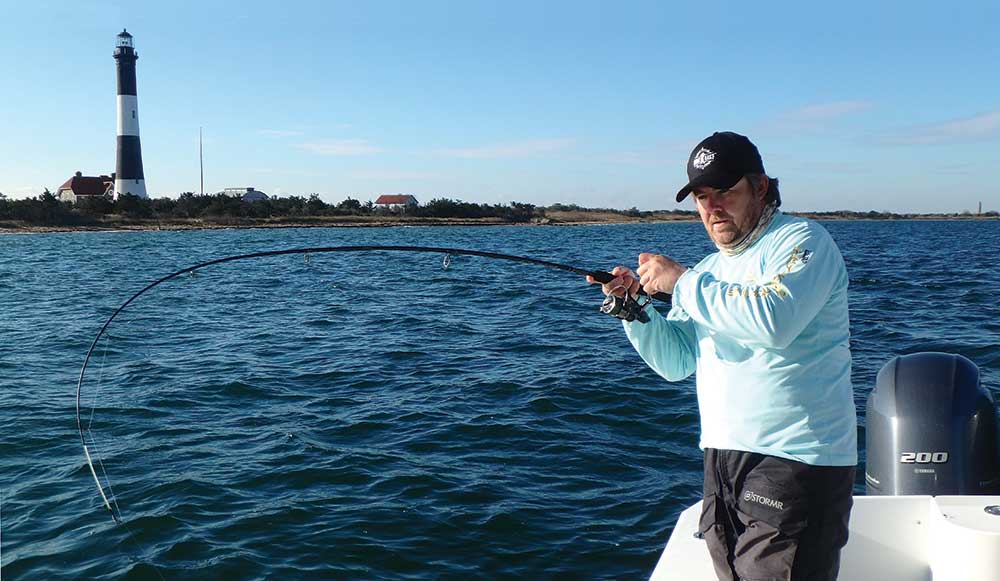
Choosing a Rod and Reel Setting
There is nothing wrong with admitting when another angler outfishes you. Pay attention to your surroundings, but also pay attention to other fishermen, especially if they are reaching for the net more often than you are. When I first became obsessed with catching weakfish, I thought I was a good fisherman until I watched guys in other boats land way more weakfish than me.
Instead of being stubborn, I decided to take action. I went to my favorite tackle shop and sought help from John Nappo, owner of Trophy Tackle in West Babylon, New York. Nappo’s shop is centrally located to some of the best weakfish spots on the East Coast, and his knowledge of weakfish is second to none. I explained to Nappo that I could hook up to fish, but I had trouble getting them to the boat.
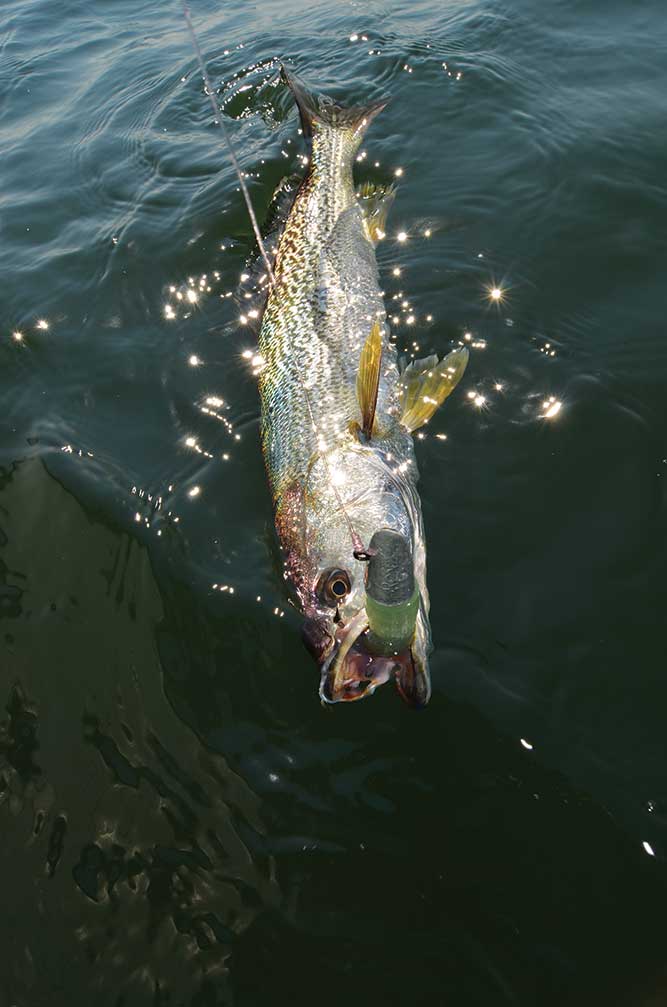
He asked me one simple question: What type of rod was I using? I thought it was odd that he didn’t care about the reel, or whether I was using live or dead bait. He neither cared about the color of my lure, nor did he care about my pound-test line.
Nappo explained that I was losing fish because my rod was too heavy. He recommends a 6-foot-6-inch rod with fast action and medium or light power. I had no problem getting the fish to feed, but my rod didn’t have enough flexibility to allow weakfish some give during the initial hookup. I kept pulling the hook from their paper-thin lips. Depending on your tackle budget, there are plenty of manufacturers that make a great rod that can be used for weakfish.
Also crucial is your reel’s drag setting. Once again, because of their weak mouths, keep your drag loose. Heavy resistance from your reel might cause a hook to pull. Fishing the waters around Fire Island isn’t only about weakfish. The surrounding waters hold double-digit-size fluke, teen-size bluefish and trophy striped bass. But if you get the weakfish itch like me, those targets become secondary each spring, when the Mackinaw peaches of the piscatorial world become available.
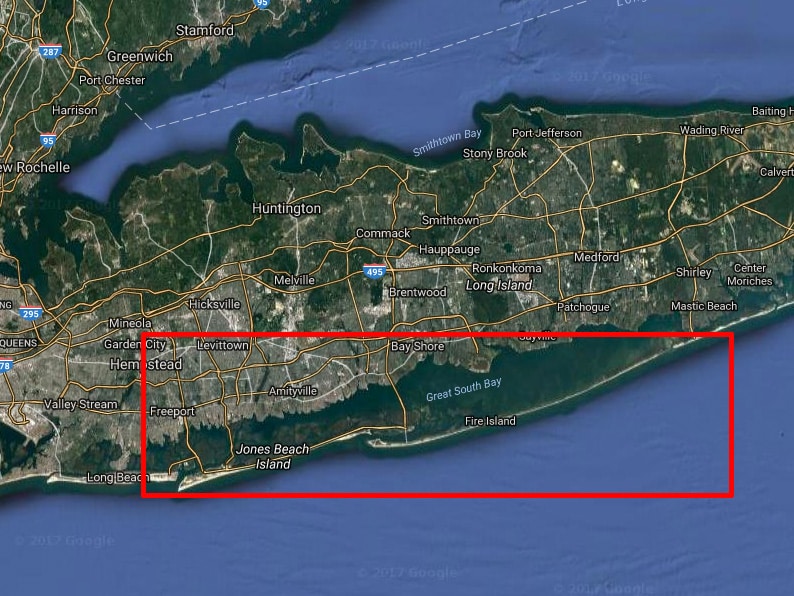
Information About Fire Island
Fire Island is home to 31 miles of some of the nicest beaches in the Northeast. The island is actually made up of 17 communities, each one unique in its own way. Because the island is only 1,300 feet wide, cars are prohibited during the summer months. People access the island via ferry. Once on the island, they get around by bike, walking or water taxi.
Fire Island has few hotels, so most people rent houses on a weekly, monthly or seasonal basis. The island has plenty of bars and restaurants. A great place to grab a bite is the Island Mermaid restaurant because of its great food and incredible views.
You might notice something odd about the Fire Island Lighthouse: The lighthouse was originally built adjacent to the inlet. It’s nowhere near the inlet these days. Due to the westward migration of sand along the beach, known as littoral drift, the inlet is now approximately 6 miles west of the lighthouse.

